Take a deep dive with me into ichiju sansai, the guiding principles to create harmony in traditional Japanese meals. I’ll walk you through the key elements and share practical tips for how you can build balanced everyday meals at home, too.
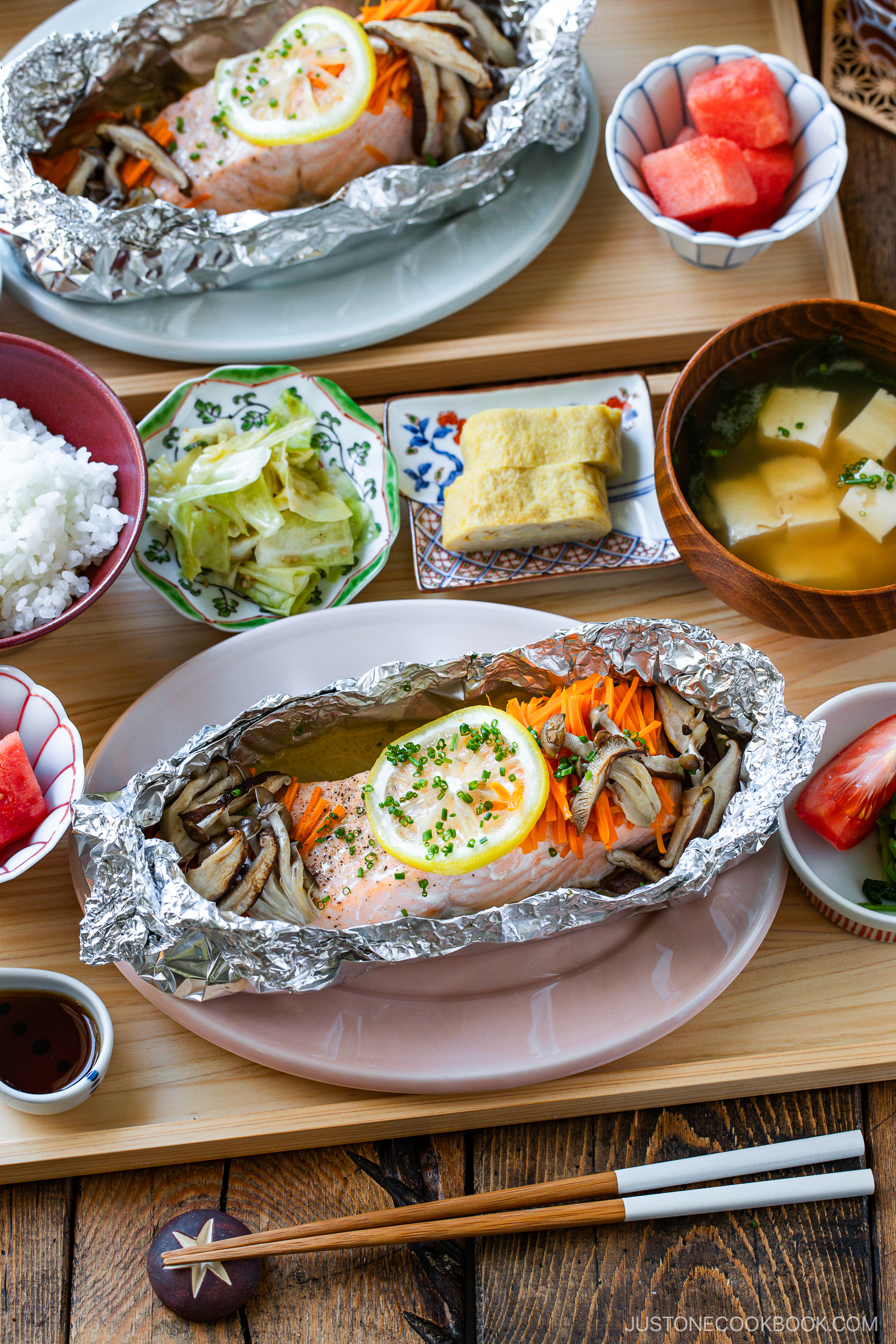
Have you ever wondered how I build everyday meals that are balanced yet simple? It’s all about ichiju sansai (一汁三菜), the guiding principles for creating harmony in traditional Japanese meals.
It’s easy to follow this simple and adaptable framework to add balance, variety, harmony, and seasonality to your home table. I’ll show you how!
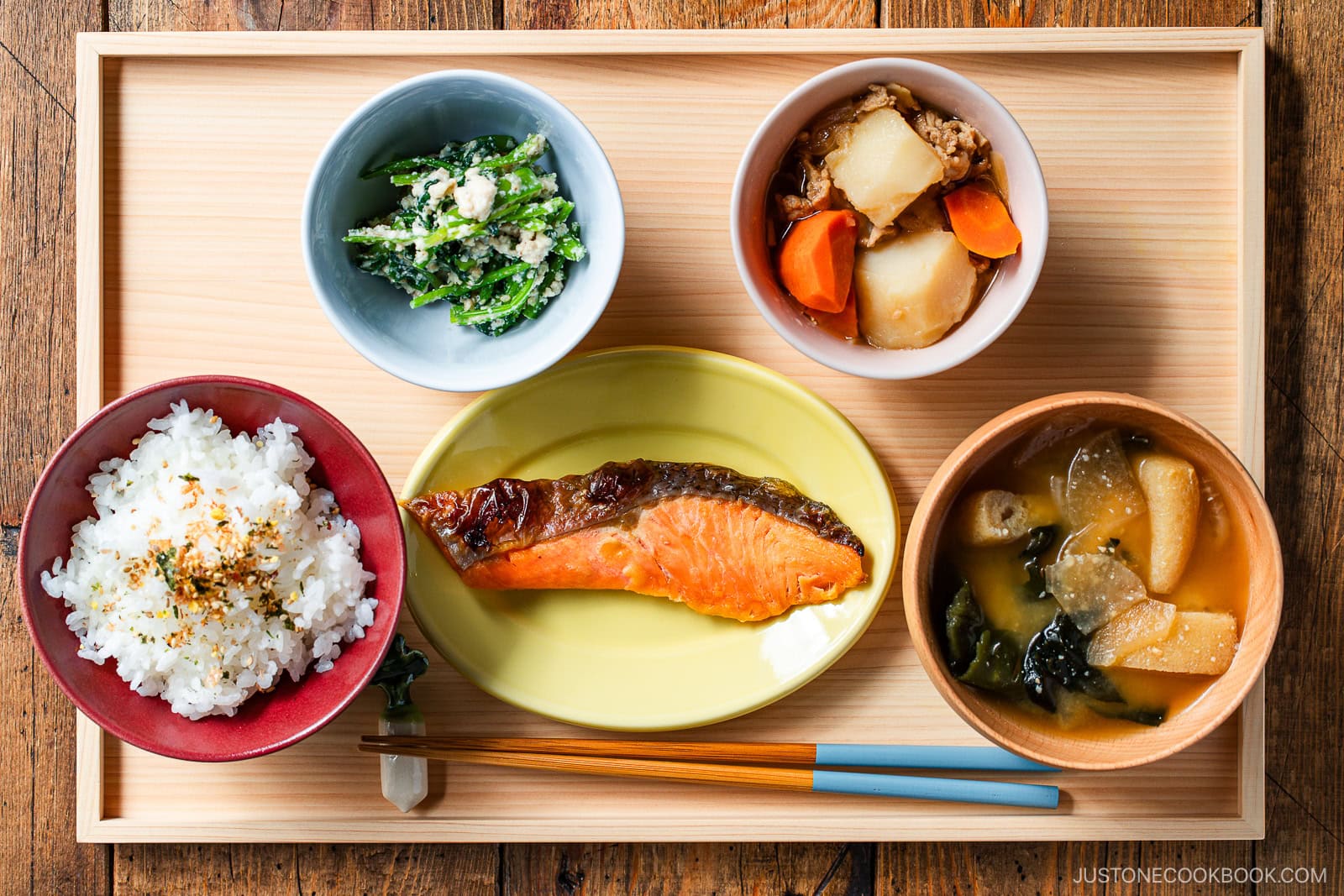
What is Ichiju Sansai?
Ichiju sansai (一汁三菜) literally means “one soup, three dishes” and is a set of guiding principles for creating harmony in a traditional Japanese meal.
The three dishes include one main dish and two sides, so the basic Japanese meal set consists of rice + soup + main dish + two side dishes.
Ichiju sansai dates back more than 600 years. These days, it’s considered a flexible framework for traditional and modern Japanese cuisine, Asian and Western cuisines, and beyond.
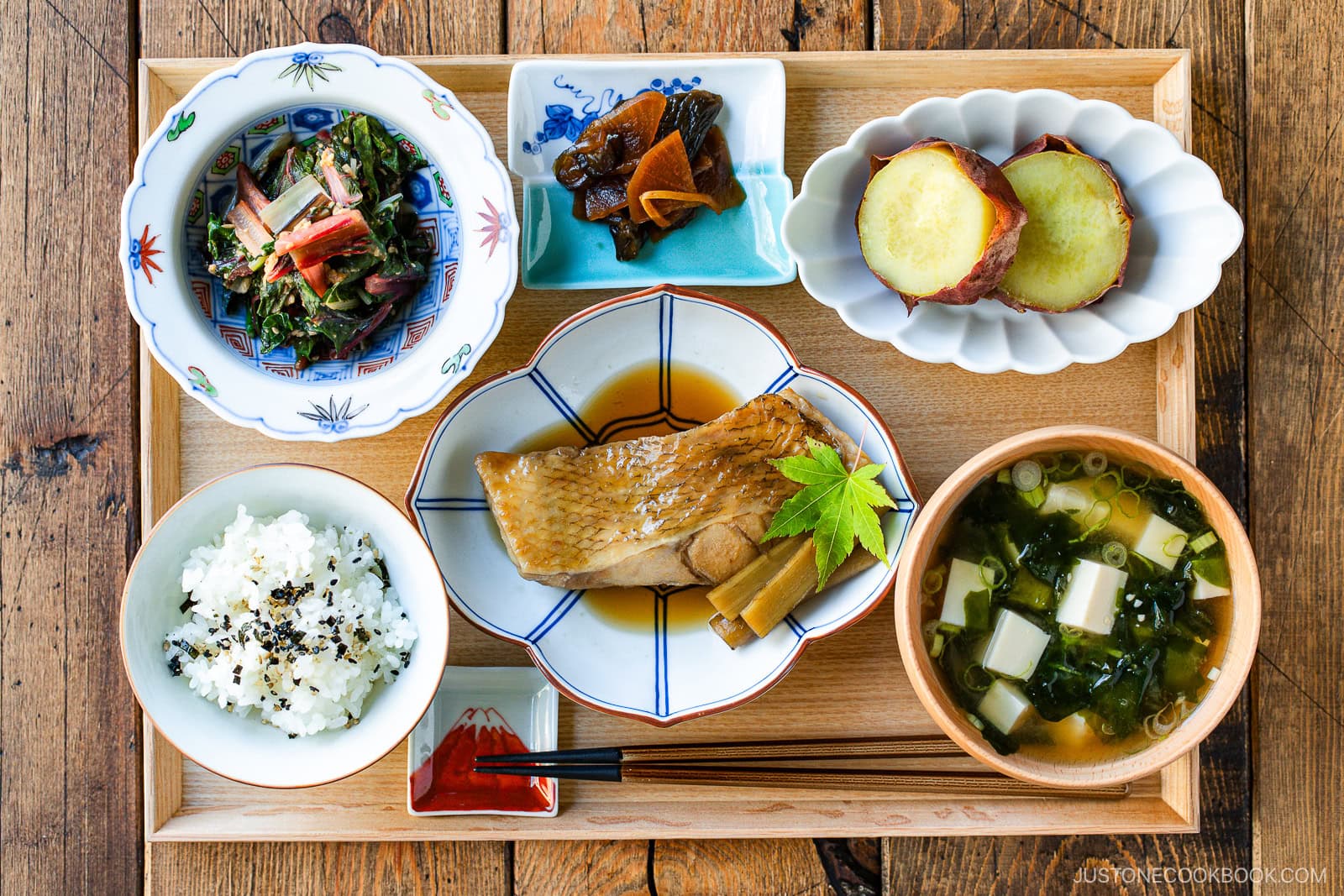
Rice: The Heart of the Japanese Meal
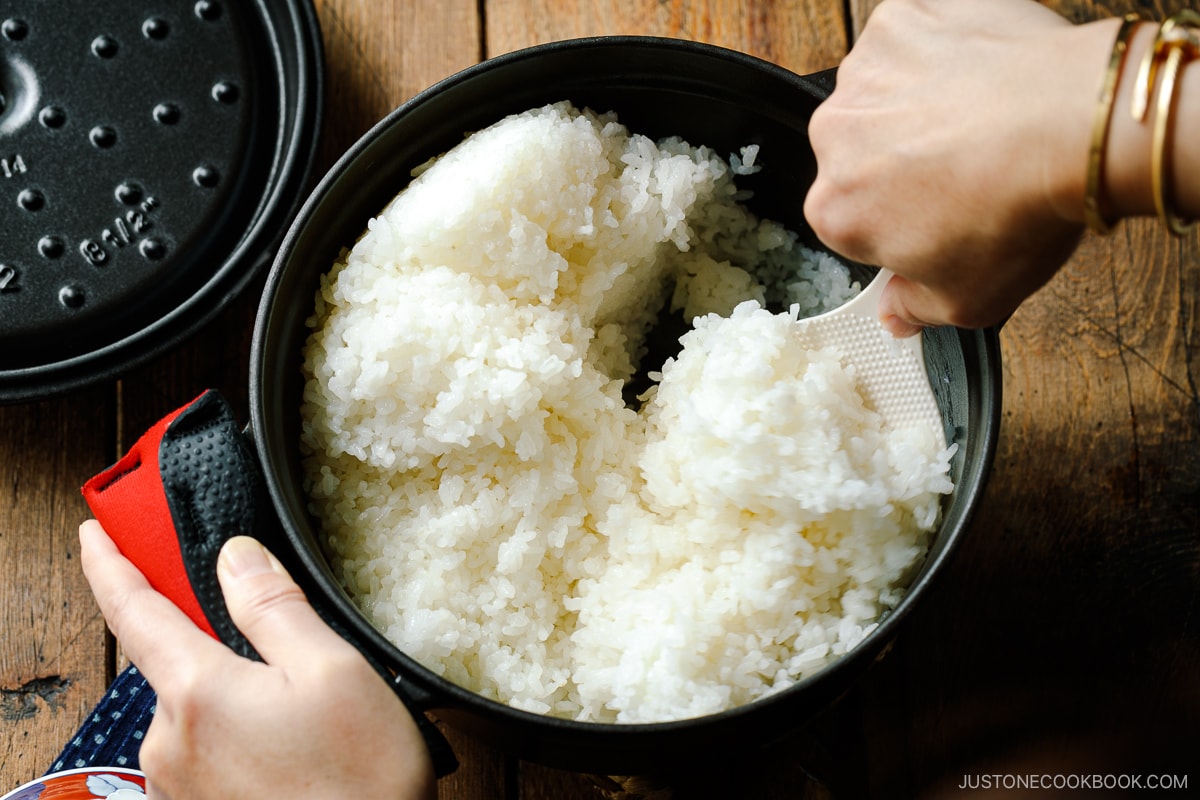
In Japan, rice isn’t a side dish—it’s the center of the meal that brings comfort, nourishment, and a sense of home. In fact, the word gohan (ご飯) means both “rice” and “meal.”
The three dishes in ichiju sansai are called okazu (おかず)—“foods that accompany rice”—and highlight rice’s key role.
Rice is always present in the traditional diet and is a symbol of Japanese culture and identity.
How to Cook Perfect Japanese Rice
- white rice in a rice cooker or pot on the stove
- brown rice in a rice cooker or Instant Pot
- mixed rice like Takikomi Gohan or Mushroom Rice
Soup: A Bowlful of Soul
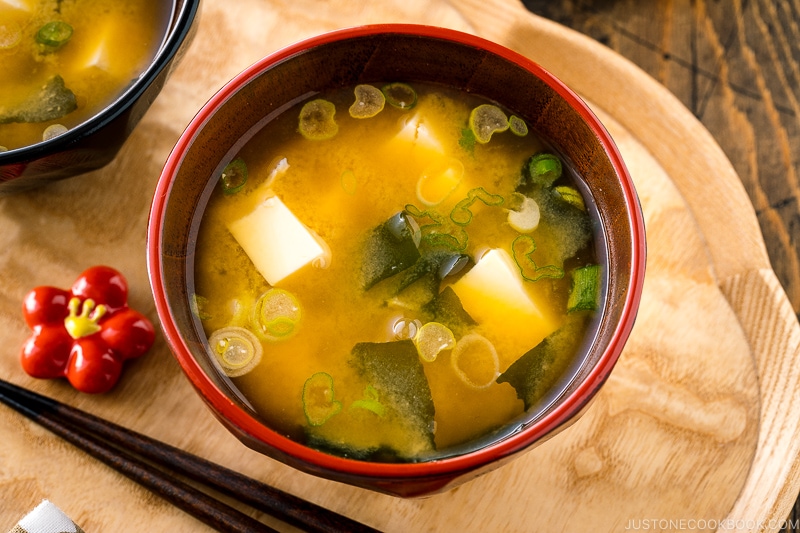
As rice’s humble yet essential companion, soup completes the meal and makes it feel whole. A comforting bowl of soup promotes digestion, warmth, and balance.
Soup is more than just food—it’s a daily ritual in Japan. Each household has its own personal style, and it’s said you can recognize a family by their miso soup. It’s a true taste of home.
In Japan, we enjoy different dashi bases, seasonal vegetables, and proteins in hearty soups like Tonjiru or light and clear broths like Osuimono.
Beginner-Friendly Soup Recipes
- Easy Miso Soup in just 10 minutes
- Classic Miso Soup in 20 minutes with homemade dashi
Main Dish: The Star of the Table

The main dish (shusai, 主菜) is the star of the show that brings excitement and keeps balance and focus in your menu.
The main dish is the meal’s primary source of protein to help build and energize the body. It also sets the tone for the menu, inspiring your choice of soup and sides.
In an ichiju sansai meal, the rice and soup form a simple foundation while the main dish adds focus and substance. Together with two sides, they create a harmonious, balanced meal where no single dish dominates.
4 Steps for Choosing a Main Dish
Select your main dish with four factors in mind:
- PROTEIN – Focus on protein. Keep meals exciting: Rotate proteins throughout the week—fish or seafood one night, meat or chicken the next.
- SEASONALITY – Support the protein with fresh, local produce at peak harvest. Not sure what’s in season? See what’s abundant or on sale at the grocery store, or check your farmers’ market.
- COOKING METHOD – Vary how you cook so it never feels repetitive. Switch it up: Bake one day and stir-fry the next. Balance yesterday’s hearty stew with a light steamed dish today.
- BALANCE – Don’t let the main dish overpower the sides. Each dish serves an important role in a balanced meal. Pro tip: Complement flavors, textures, and colors. Lighten a rich and heavy main dish with crisp or tangy sides. If it’s mild and delicate, pair it with a bold and hearty side.
Main Dish Recipes To Try
Side Dishes: The Colorful Sidekick
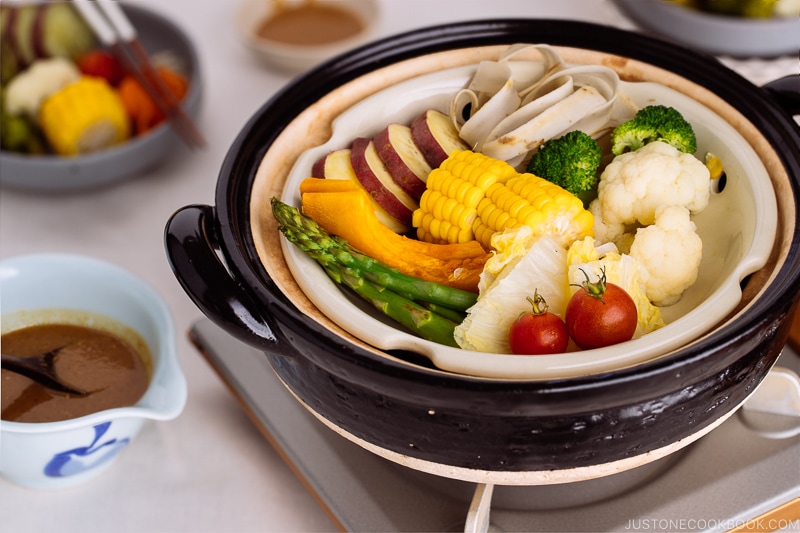
The side dishes (fukusai, 副菜) bring harmony and joy to the Japanese table and play an essential supporting role.
While the main dish provides protein and substance, the side dishes round out the meal with variety, nutrition, color, and balance.
There’s no strict rule for the two sides; however, the balance works best when one is hearty and cooked and the other is light and refreshing.
7 Steps for Choosing Sides
I’ll walk you through how I select my sides. It comes naturally once you get into a rhythm!
- Select the main dish. Decide on your protein first.
- My choice: Salmon in Foil with fatty Alaskan salmon
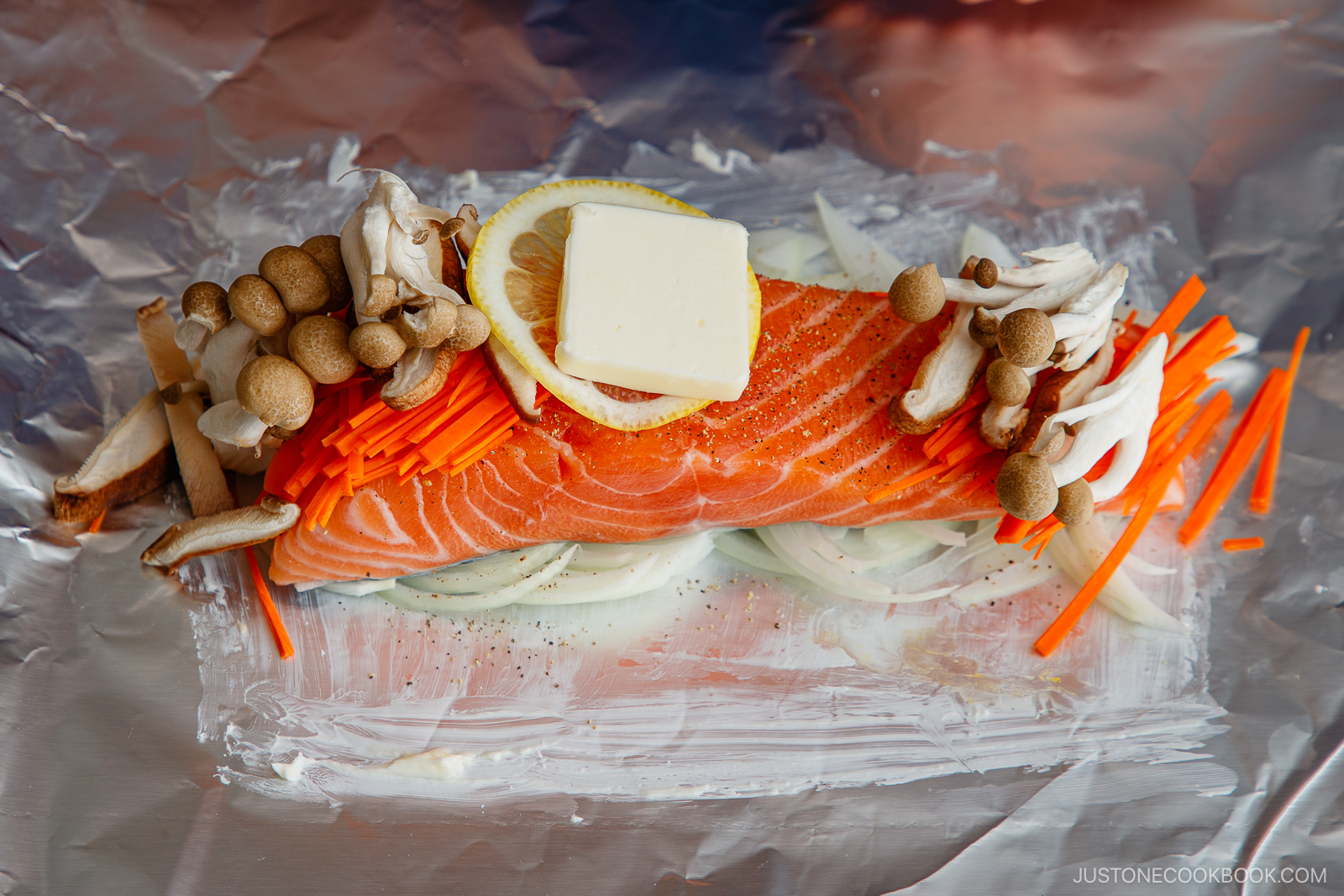
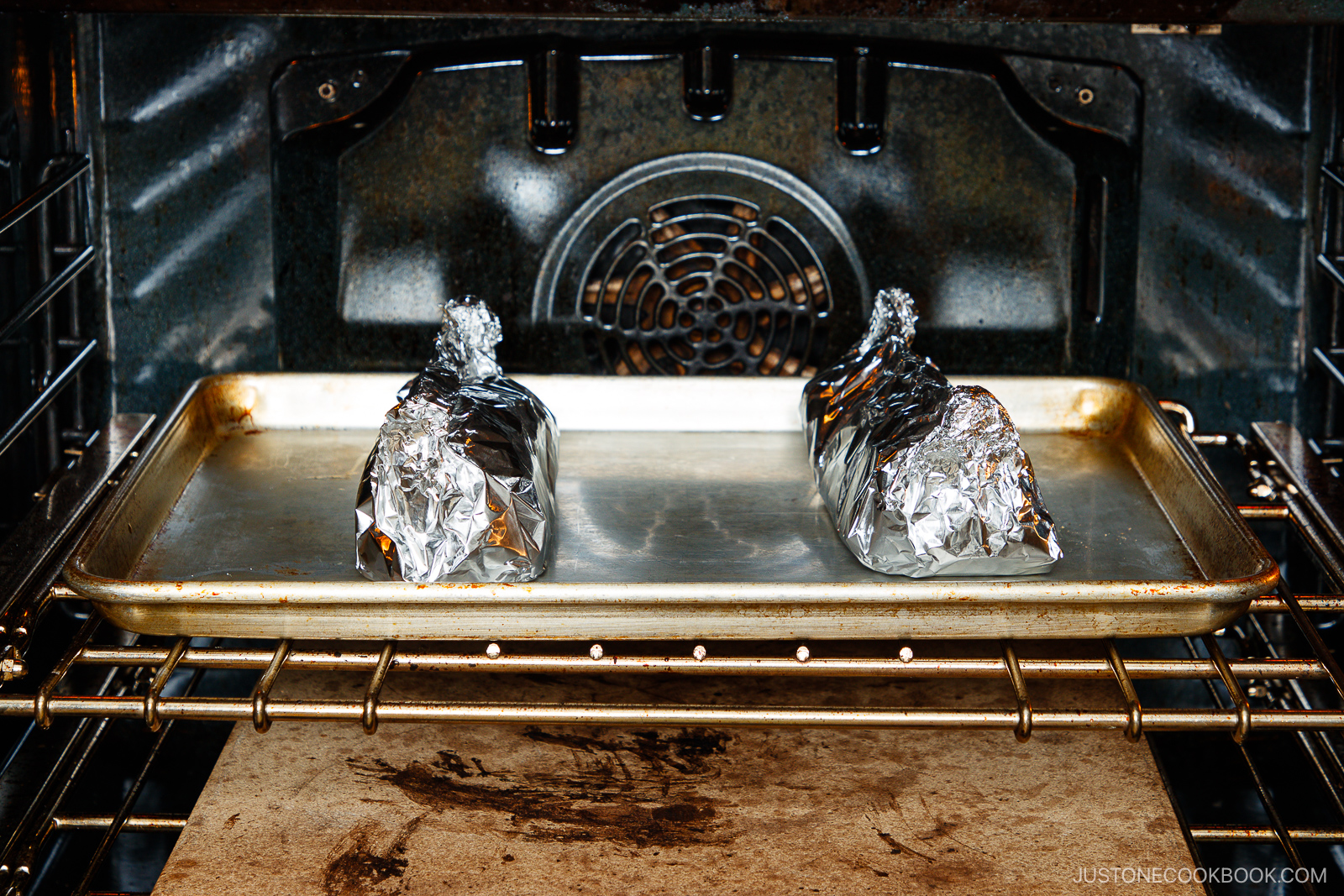
- Balance the flavors. Use sides to vary seasonings and richness. Pair rich, heavy mains with light and refreshing sides, or mild mains (simmered fish) with strong-flavored sides (kinpira gobo).
- My choice: Spinach Salad
- Contrast the textures. Introduce sides with different textures from the main. Balance soft mains with a crunchy side; crispy mains (deep-fried dishes) need a tender side (potato salad).
- My choice: Yamitsuki Cabbage
- Vary the colors. Add colorful accents for a more lively, appealing meal. Rice and protein are often white or brown, so add green (cucumber, broccoli, lettuce), red (tomato, carrot, kabocha), and yellow (egg, corn) in the sides.
- My choices: Tamagoyaki and tomato
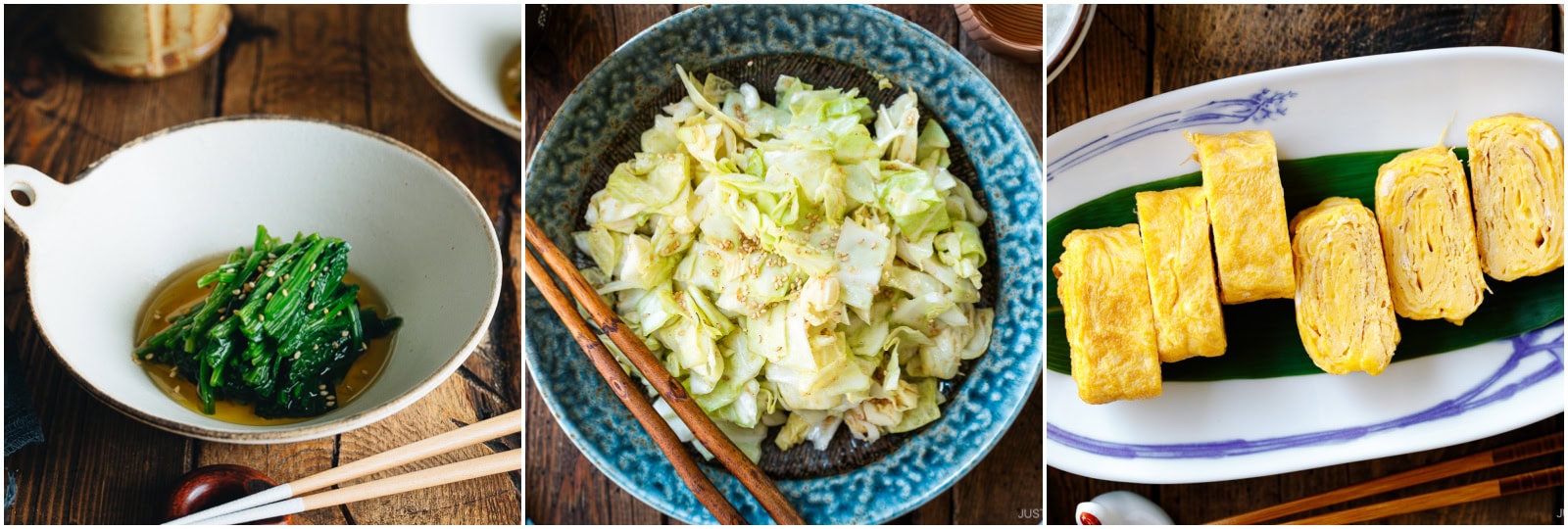
- Supplement nutrition. Sides provide nutrients that the main dish lacks. Advanced: Check for ways to add more vitamins, minerals, and fiber.
- My choice: Watermelon
- Coordinate with the soup. Use different ingredients in the soup vs. sides to increase variety and nutrition.
- My choice: Miso Soup with Tofu and Wakame Seaweed
- Check the portion size. Make the two sides together about half the amount of the main dish. For a 150 g (⅓ lb) main dish, serve two sides that are 75 g (2½ oz) combined.
- Don’t worry, I never measure it. Just look at it and make sure it’s proportional.

Pickles: The Flavor Reset
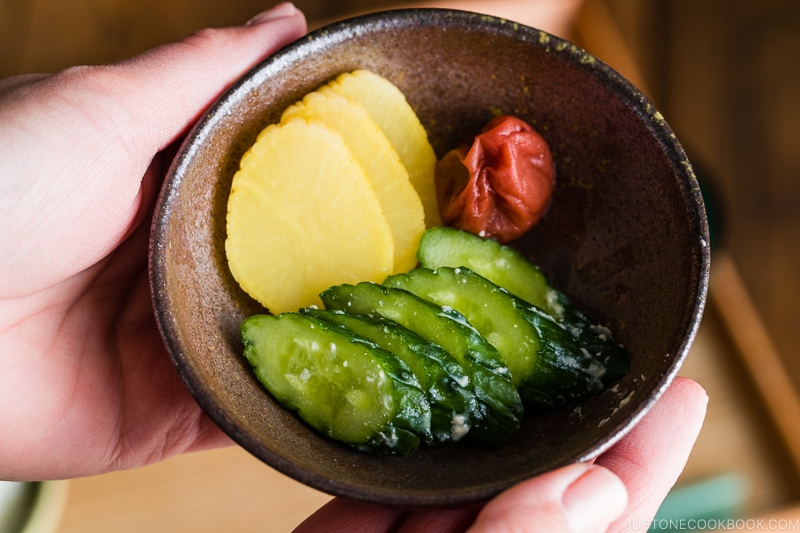
While not one of the “three dishes,” pickles (tsukemono, 漬物) are an essential player at the Japanese table and commonly served with a meal.
Japanese pickles are vegetables preserved in salt, rice bran, miso, sake lees, koji, vinegar, or soy sauce. Each method brings unique flavors, aromas, and textures, and Japan has hundreds of varieties, from supermarket staples to regional specialties.
Pickles primarily refresh the palate after rich or heavy dishes, cleansing the mouth so it’s ready for the next bite. Pickles also:
- add color
- bring texture and excitement
- offer gut-friendly benefits of lactic acid bacteria in long-fermentation pickles
- preserve seasonal vegetables for year-round enjoyment
Quick Pickles for Home Cooks
Popular pickles like umeboshi (pickled plums), takuan (daikon radish), and nukazuke (rice bran pickles) require long fermentation, so it’s convenient to purchase them ready-made.
At home, Japanese home cooks often make light pickles for the evening’s meal. Called asazuke (浅漬け), they are fast, easy, and don’t require special equipment.
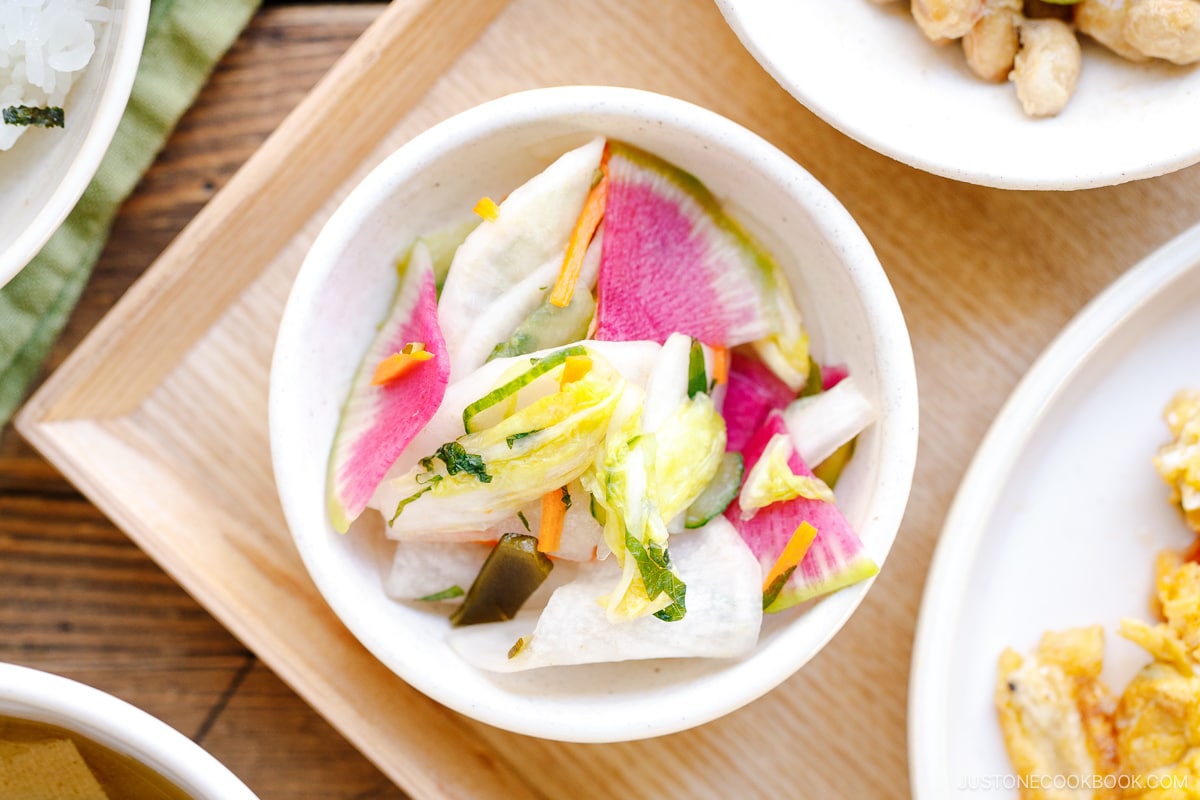
Asazuke takes just 1–3 hours! I often prepare them with everyday veggies like cabbage, cucumbers, carrots, turnips, eggplant, and daikon radish.
- Check out more recipes on Japanese Pickles You Can Make At Home.
How To Practice Ichiju Sansai in Real Life
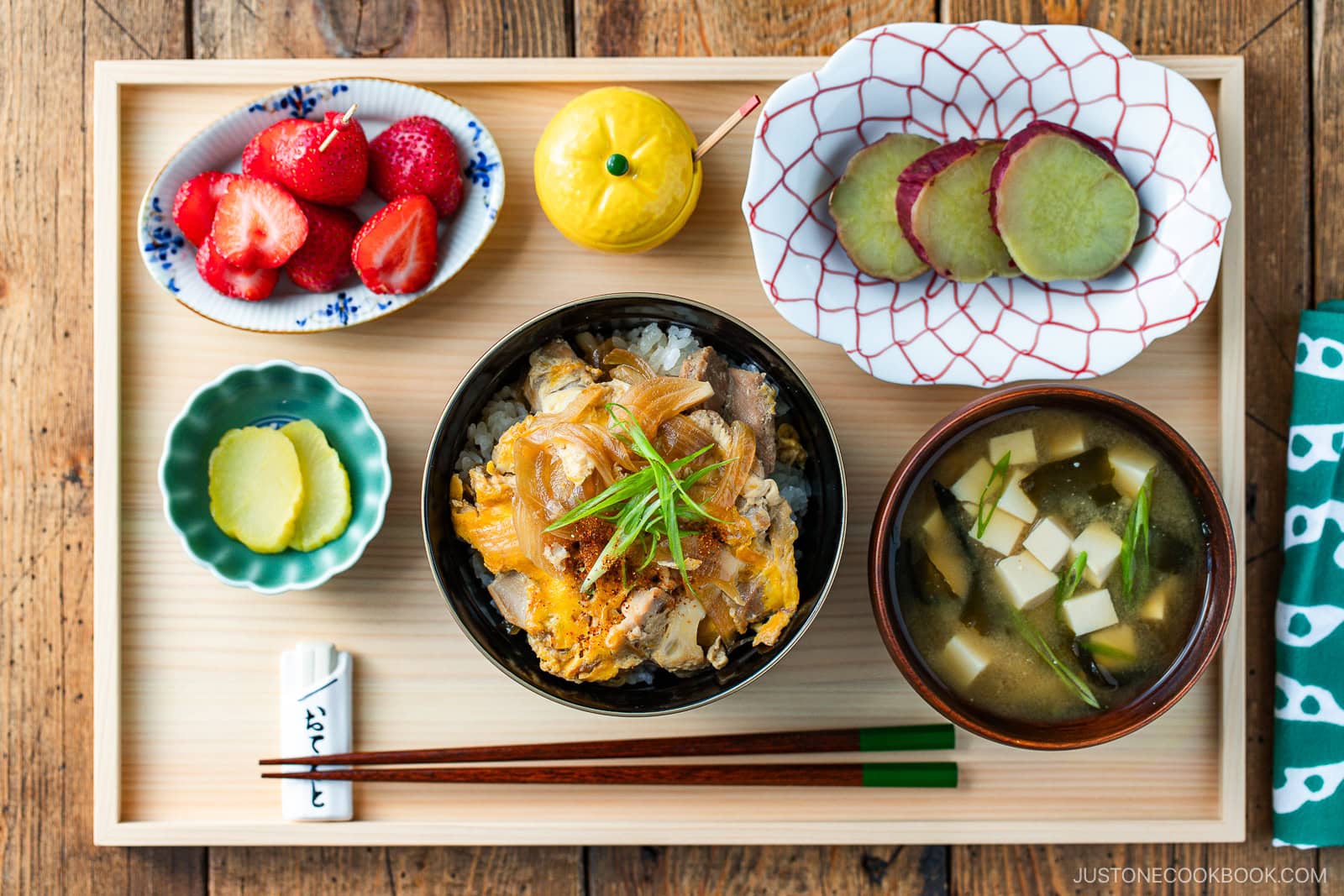
You might wonder, “How do I weave ichiju sansai into my daily life?”
How you practice it is really up to you! Here are some ways to start:
- Create a routine. Enjoy a regular “Ichiju Sansai Day” once a week.
- Adapt to your own style. Try it with your favorite cuisine—e.g., minestrone soup, herb grilled chicken, roasted root veggies, and sautéed mushrooms with garlic.
- Start small. Go with “one soup, two dishes” instead of three. You could also serve a simple cut fruit for an easy “side.”
- Batch cook ahead. Refrigerate or freeze soup, rice, mains, and sides for quick meals on busy days. Just cook one or two fresh dishes, and dinner is served!
- Mix store-bought with homemade. It’s fine to visit the deli counter for prepared foods to pair with your home-cooked dishes. Bring it all together with a beautiful presentation.
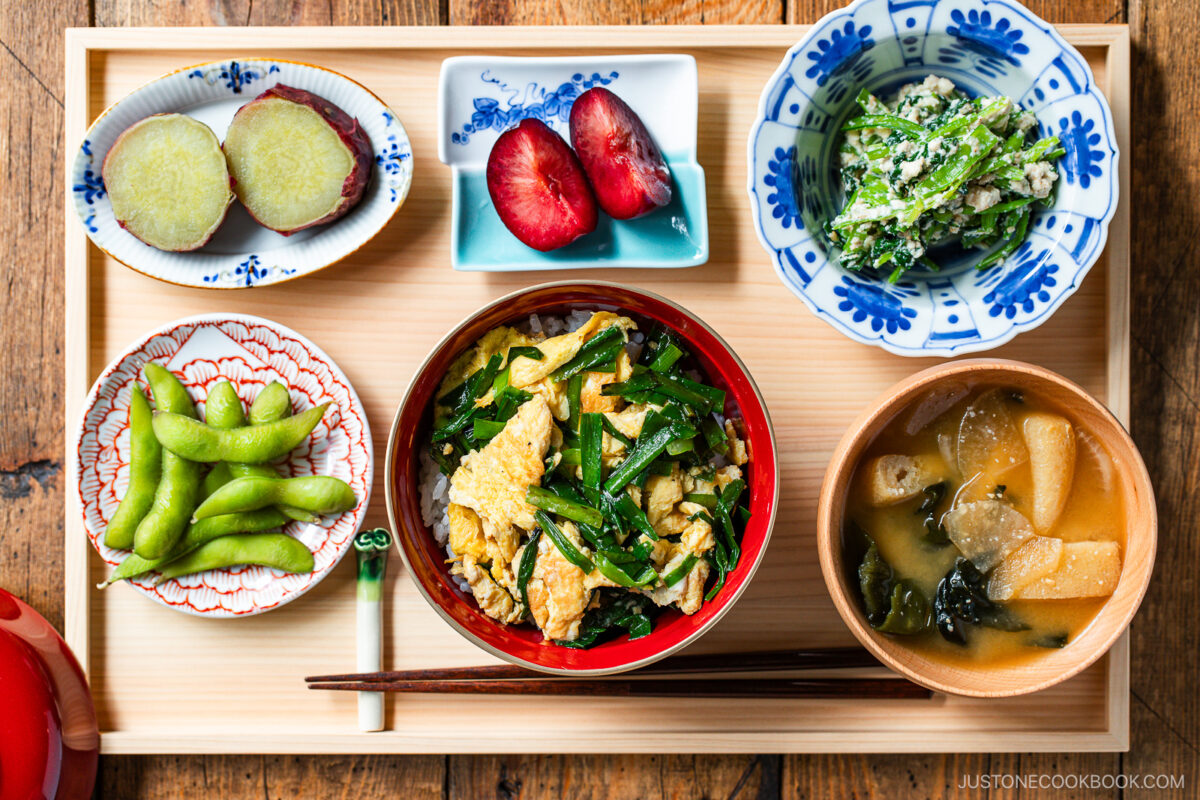
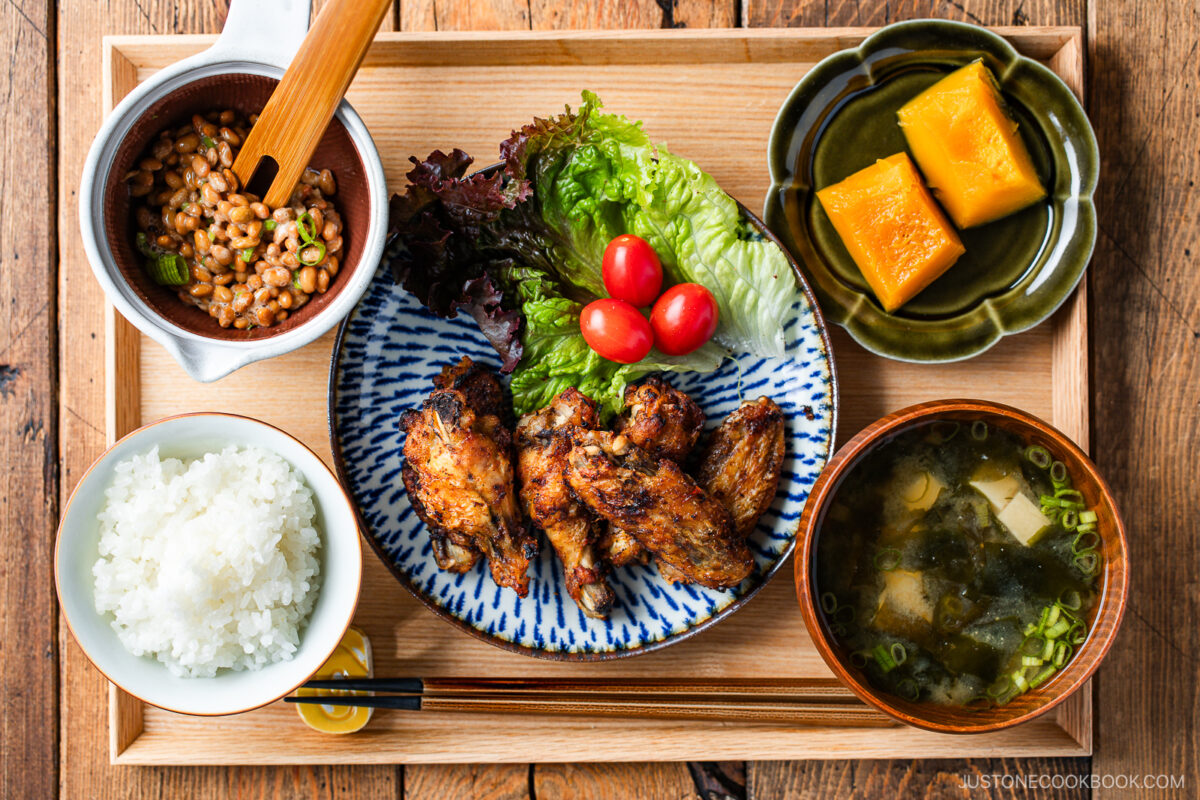
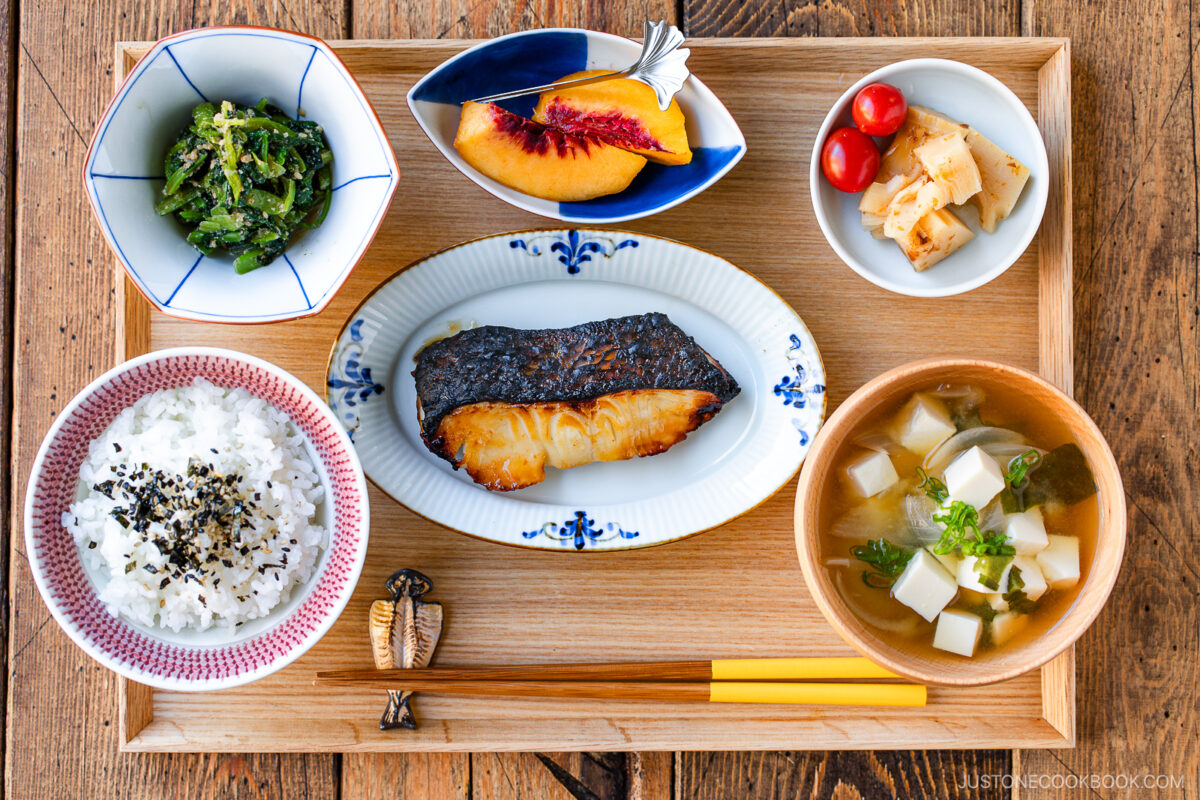
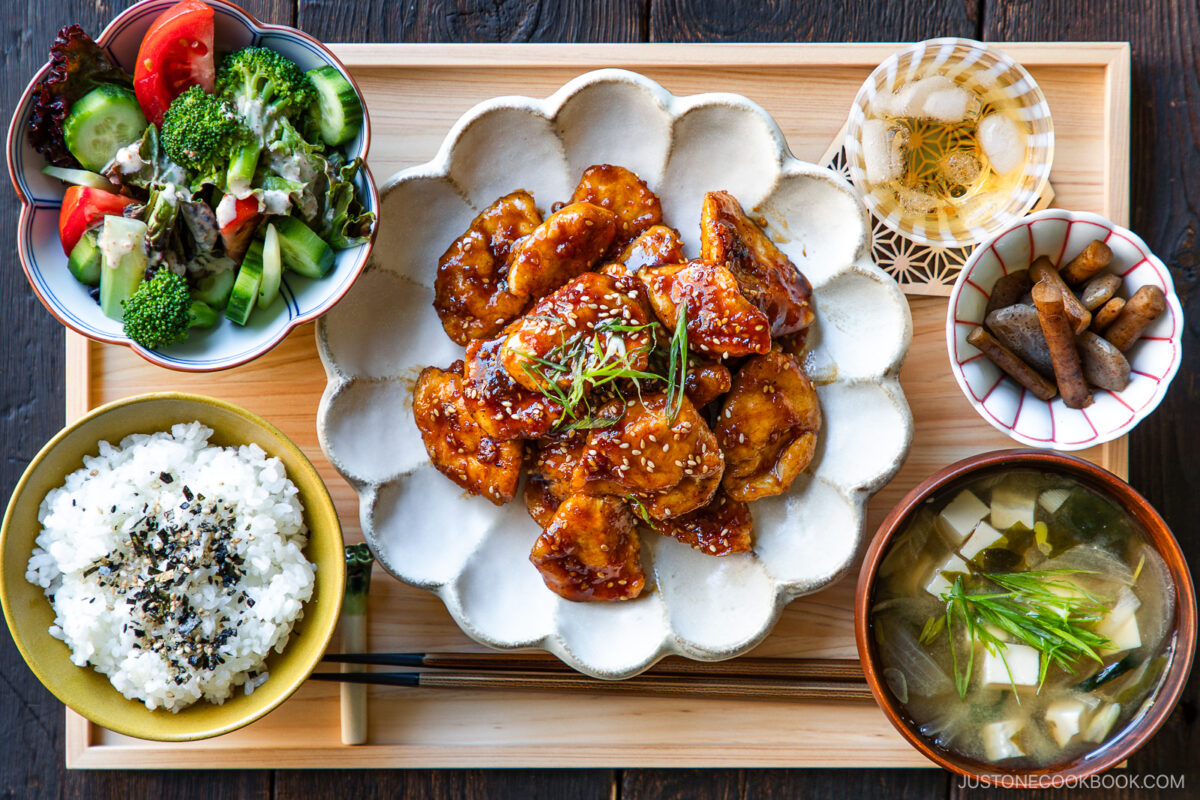
Remember, ichiju sansai is a guide, not a strict rule. Make it work for your lifestyle and enjoy the process!
Sample Menus For Your Inspiration
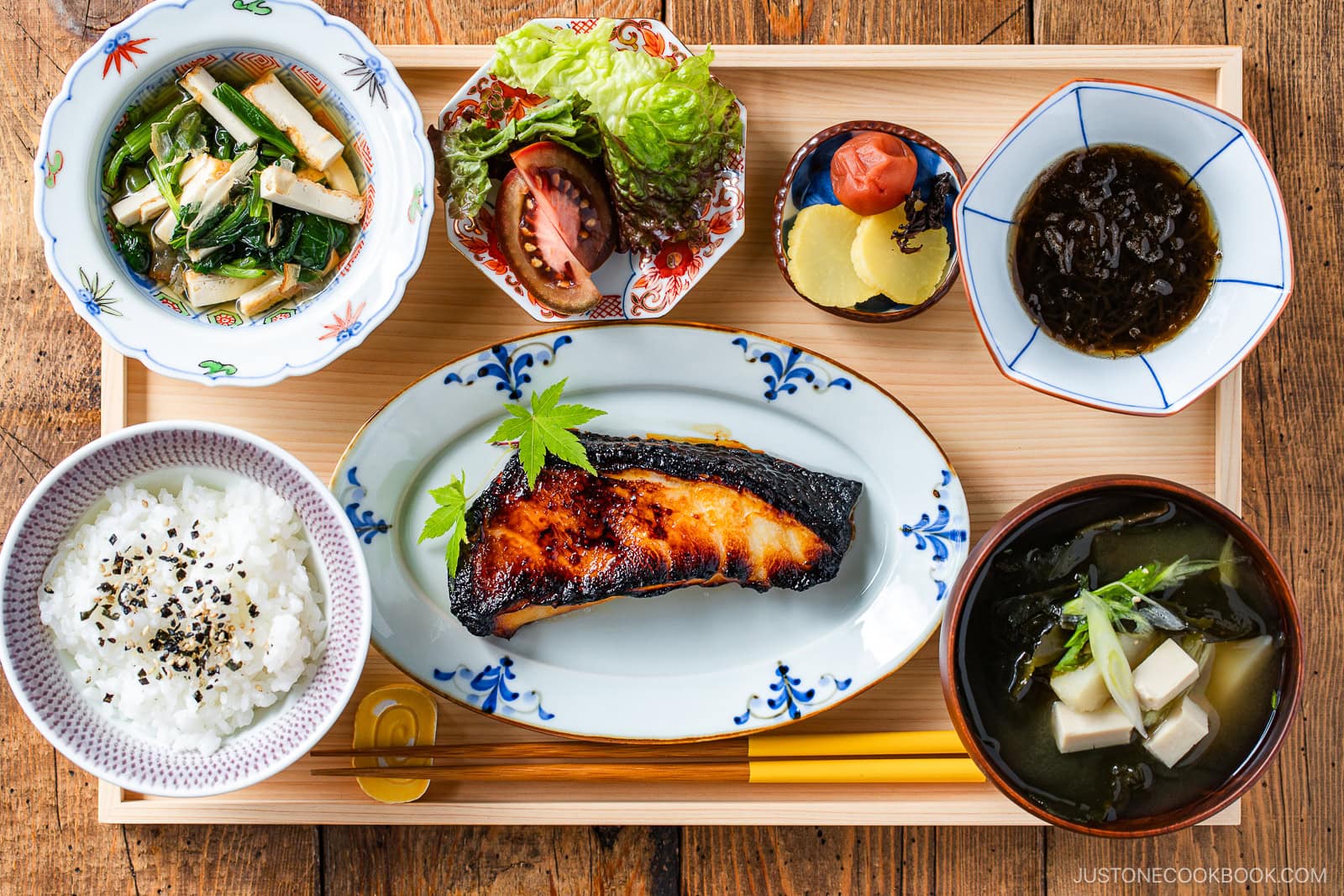
To get your creative juices flowing, consider these menus.
I often switch up the soup and sides with what’s at the market and in my fridge. Add your choice of rice and pickles, and you’re set!
- Miso Sea Bass (above)
- Side 1: Simmered Fried Tofu and Greens
- Side 2: Mozuku seaweed (store-bought) + mini salad
- Soup: Miso Soup with Tofu and Wakame
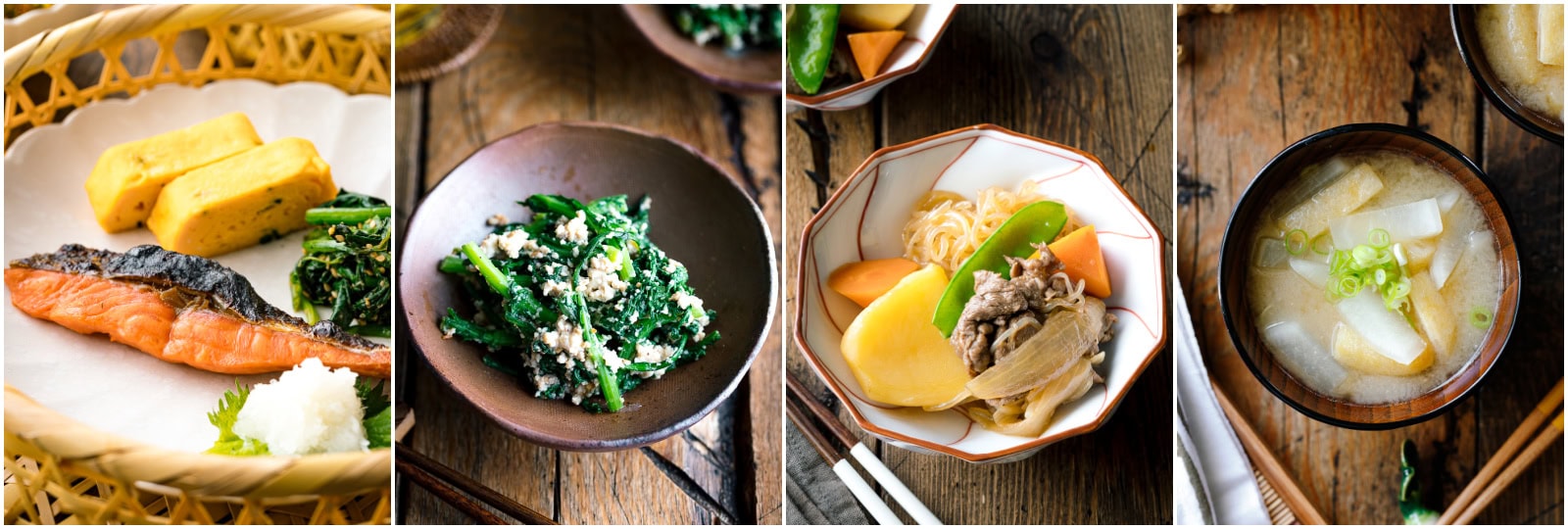
- Japanese Salted Salmon (optional one-plate style)
- Side 1: Chrysanthemum Greens and Tofu Salad (shiraae)
- Side 2: Nikujaga (meat and pork stew)
- Soup: Daikon and Fried Tofu Miso Soup
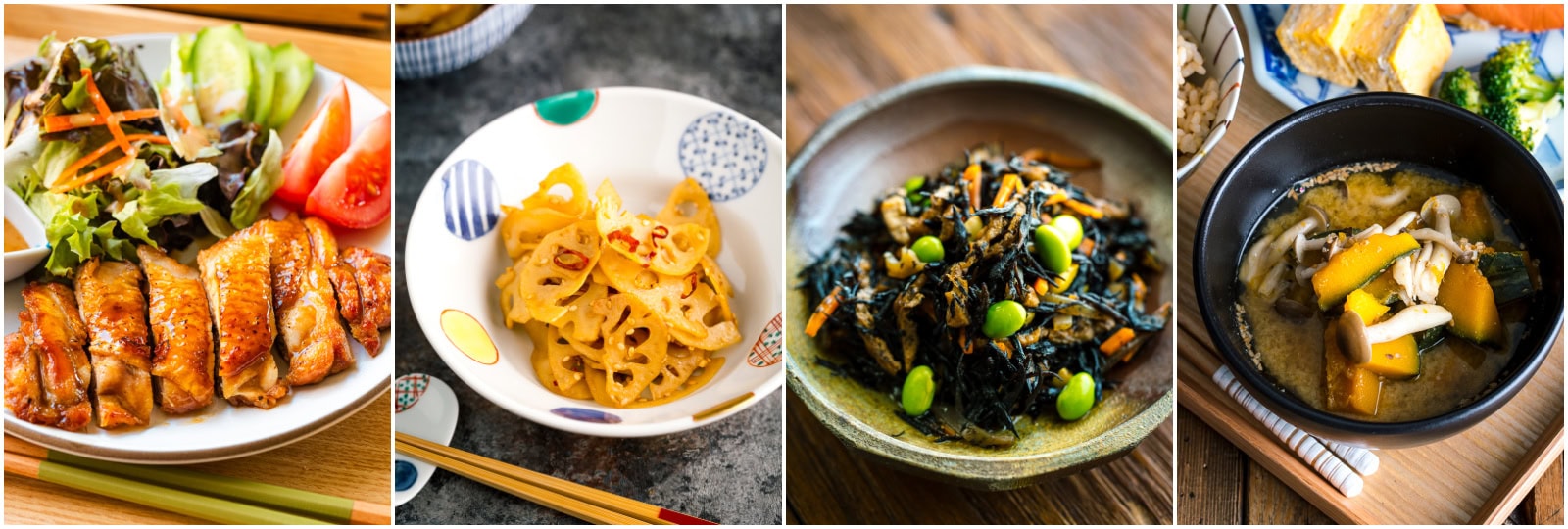
- Teriyaki Chicken (optional one-plate style)
- Side 1: Braised Burdock Root (kinpira gobo)
- Side 2: Hijiki Seaweed Salad
- Soup: Kabocha Miso Soup
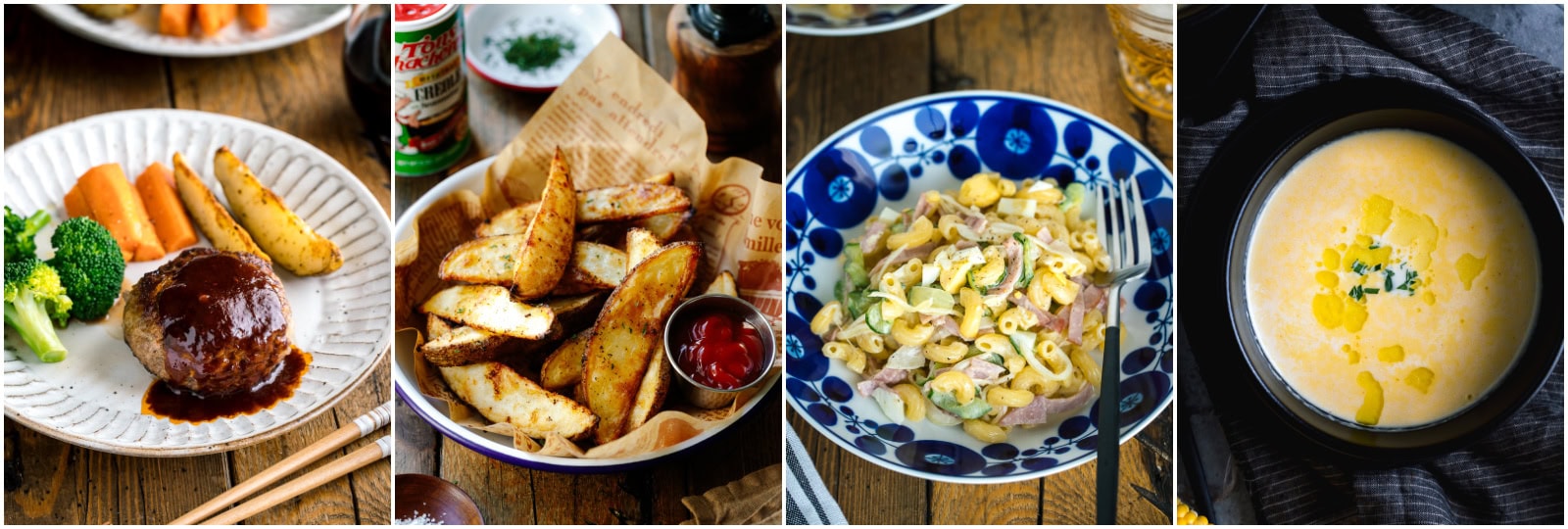
- Japanese Hamburger Steak (Hambagu) (optional one-plate style)
- Side 1: Crispy Baked Potato Wedges
- Side 2: Japanese Macaroni Salad
- Soup: Corn Soup
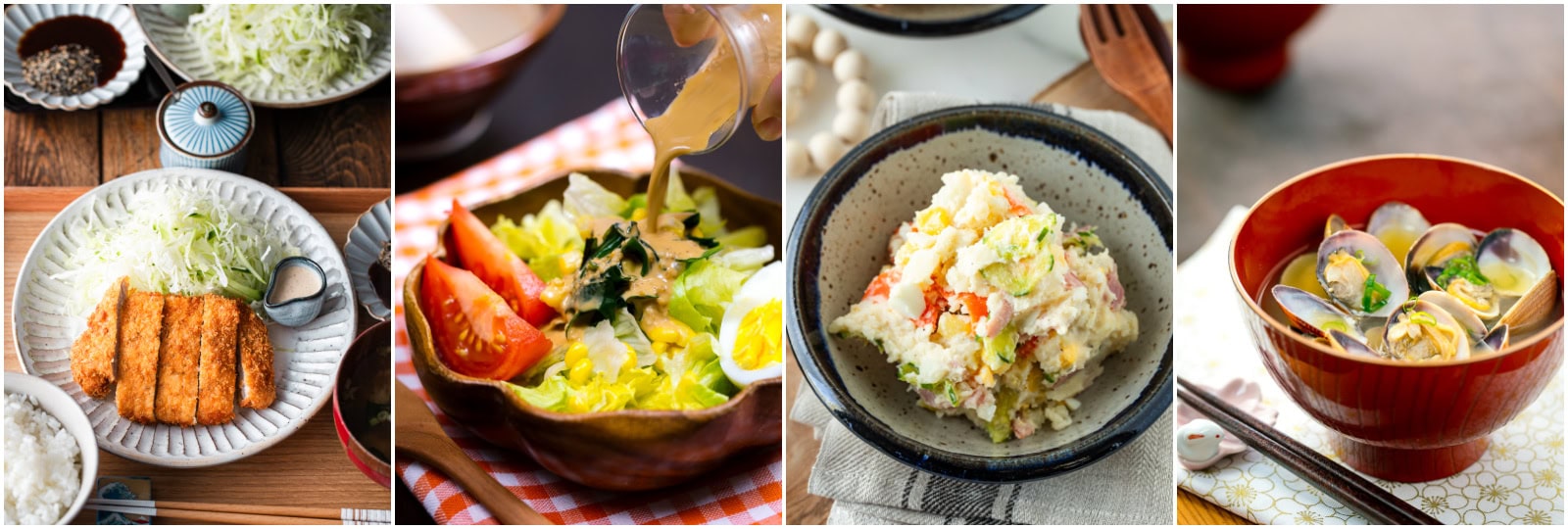
- Side 1: Cabbage salad with Sesame Dressing
- Side 2: Japanese Potato Salad
- Soup: Miso Soup with Clams
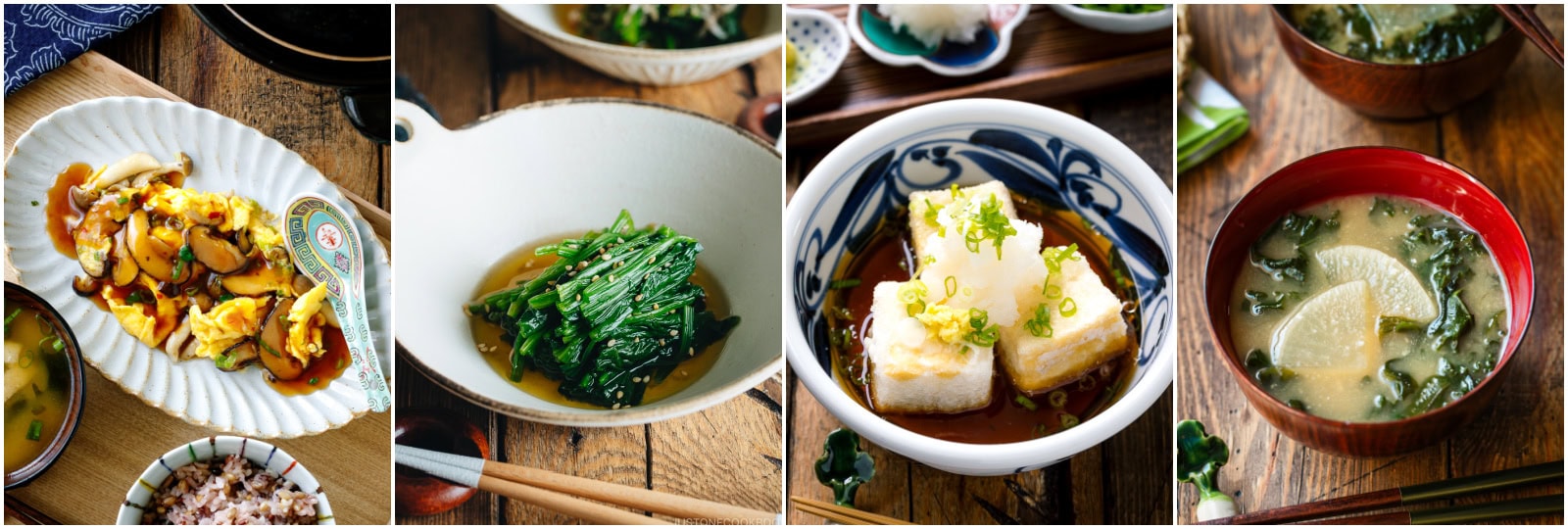
- Side 1: Japanese Spinach Salad
- Side 2: Agedashi Tofu
- Soup: Kale Daikon Miso Soup
Ichiju Sansai Creations by You
Take a look at the wonderful ichiju sansai meals created by our amazing community!
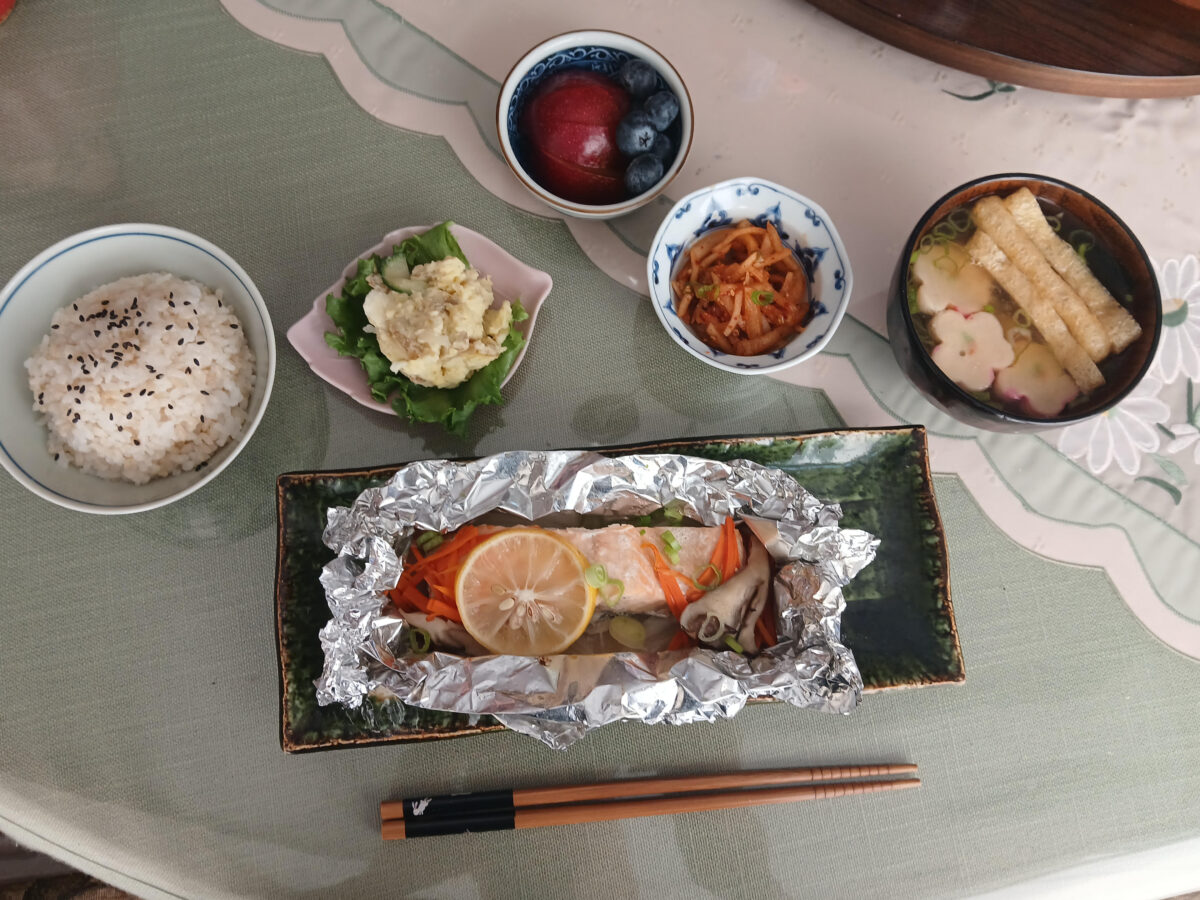
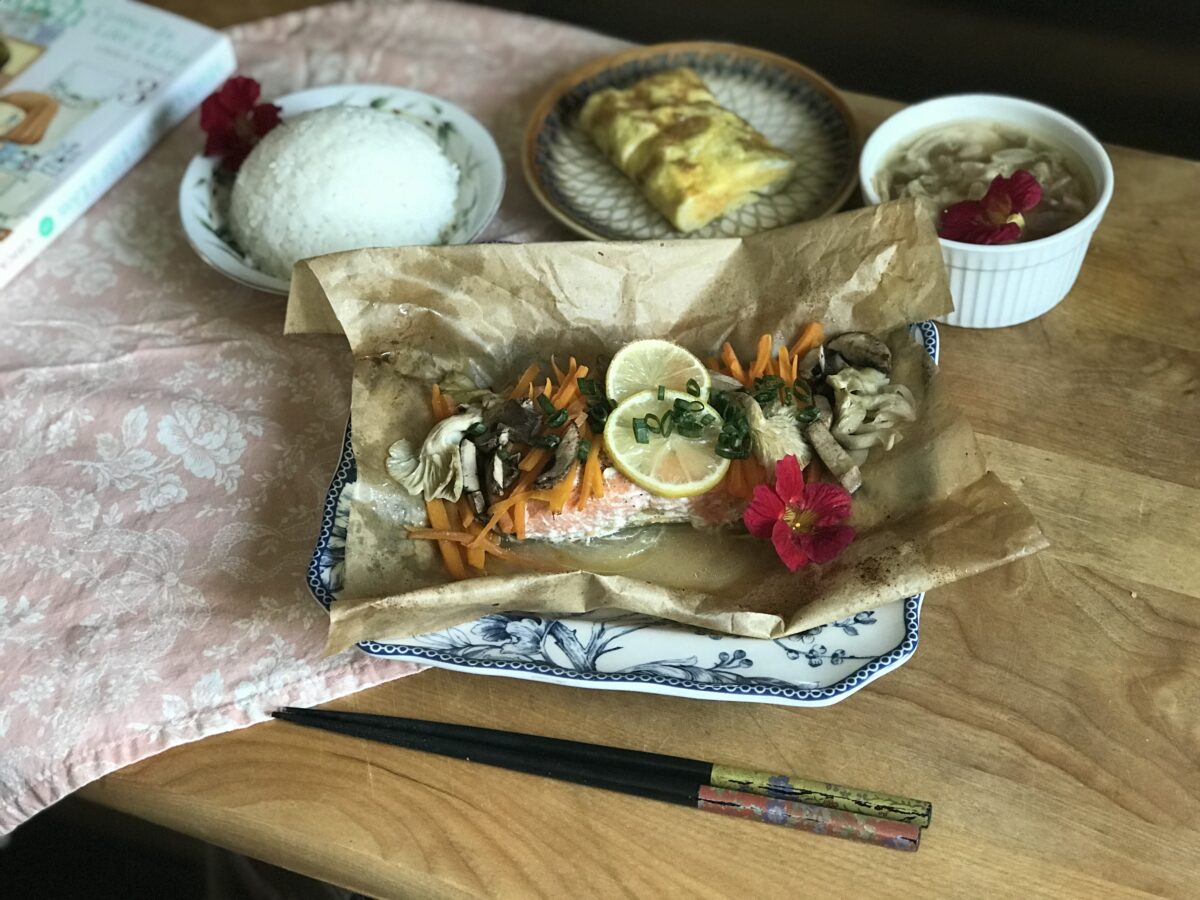
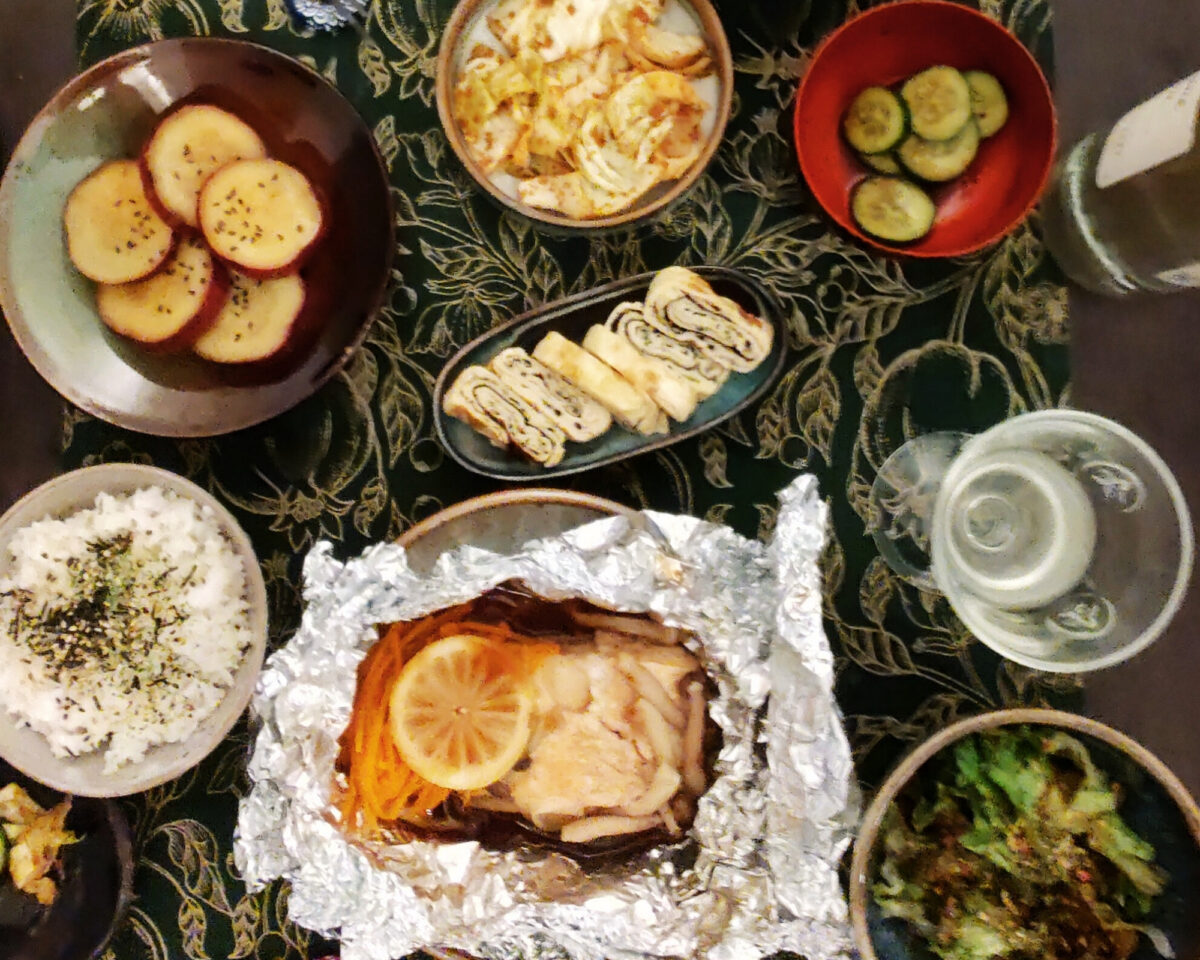
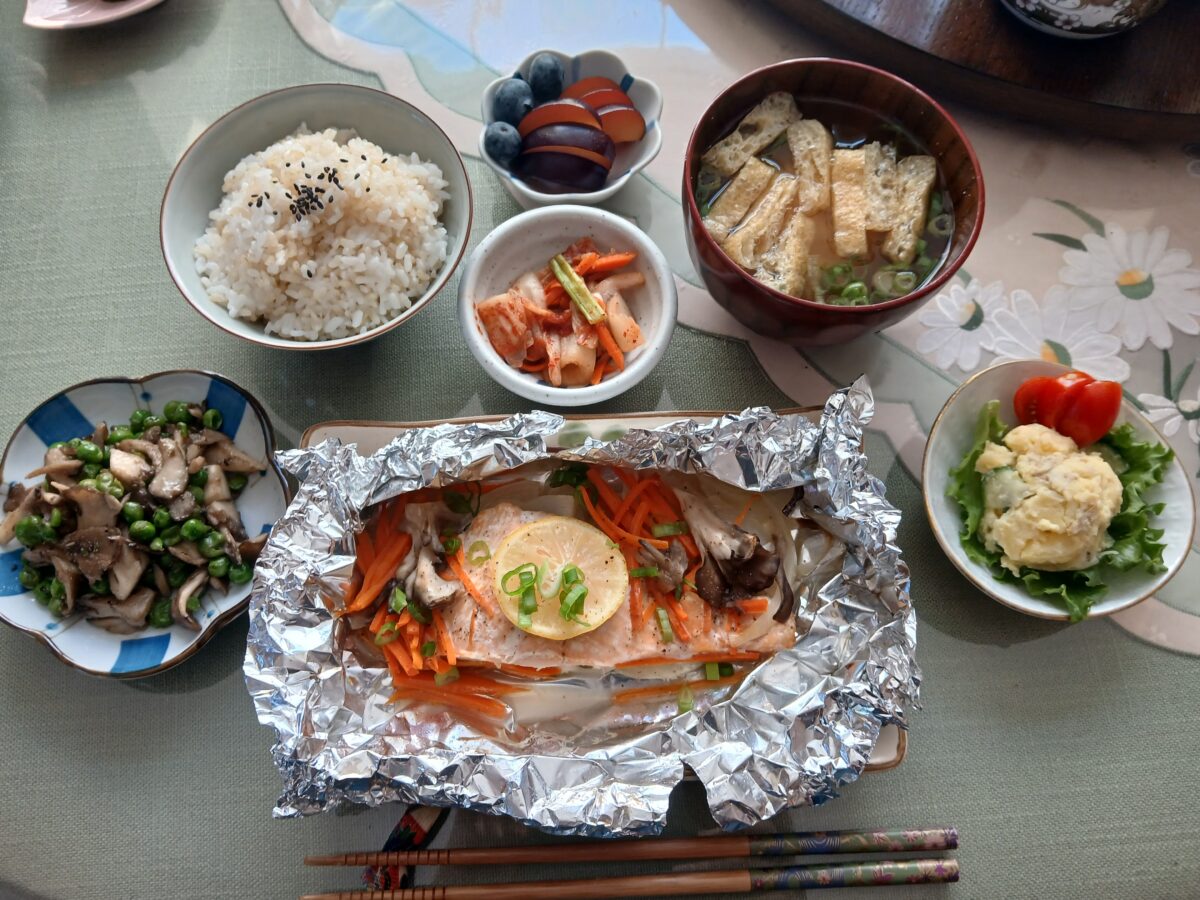
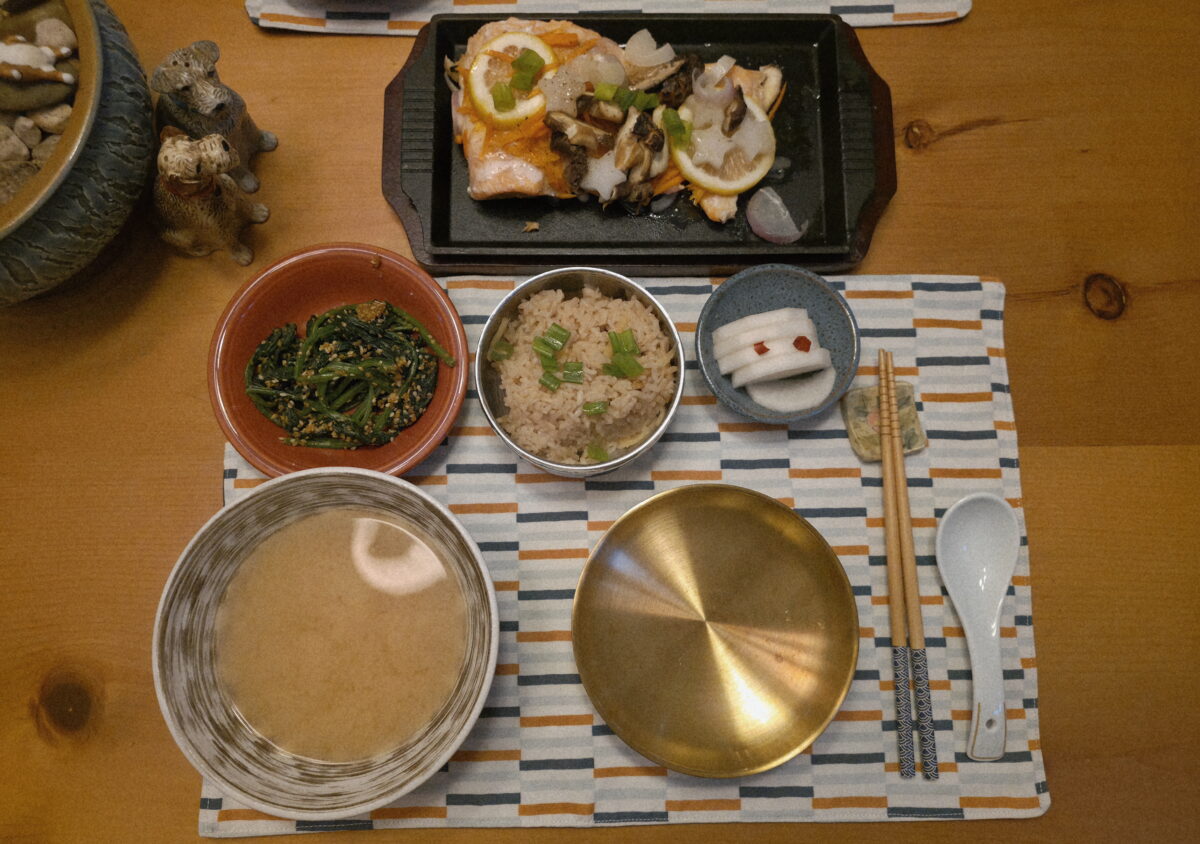
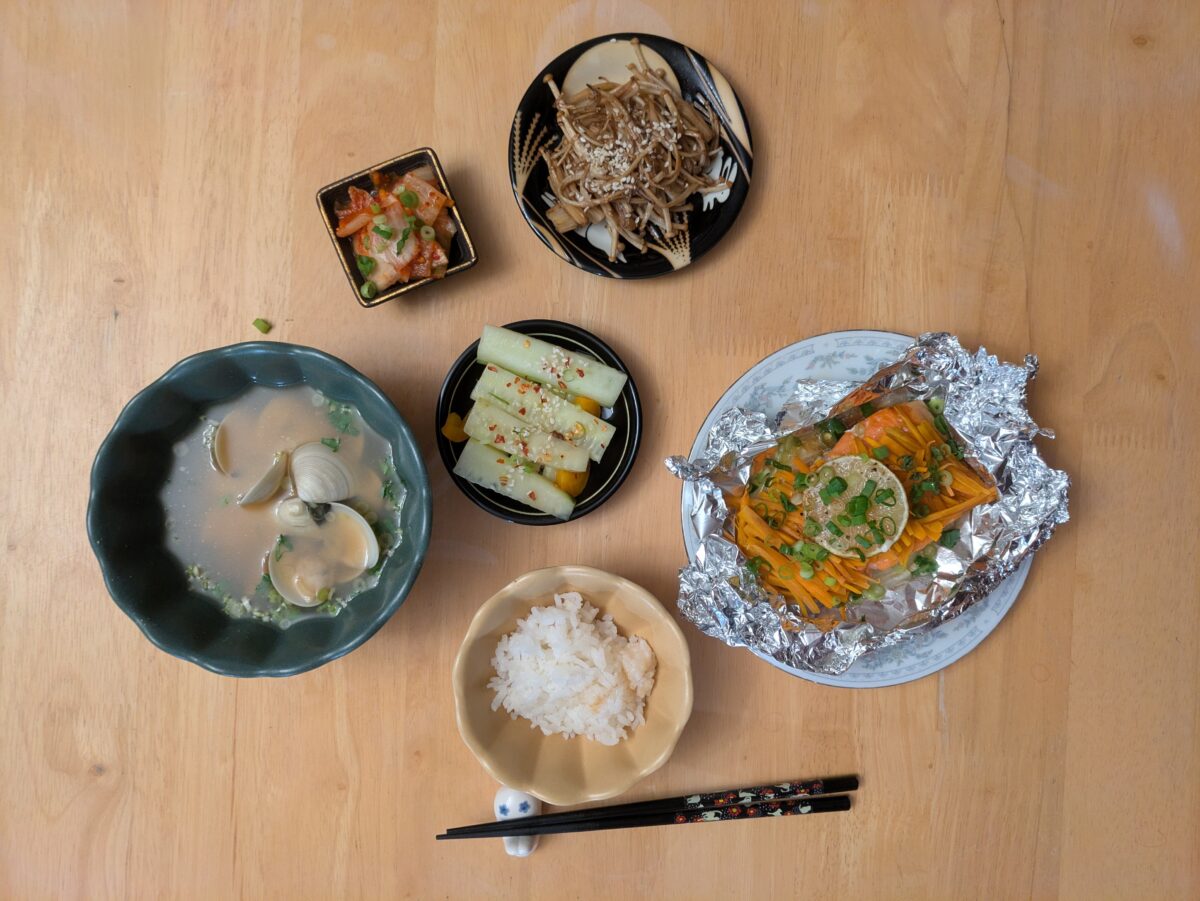
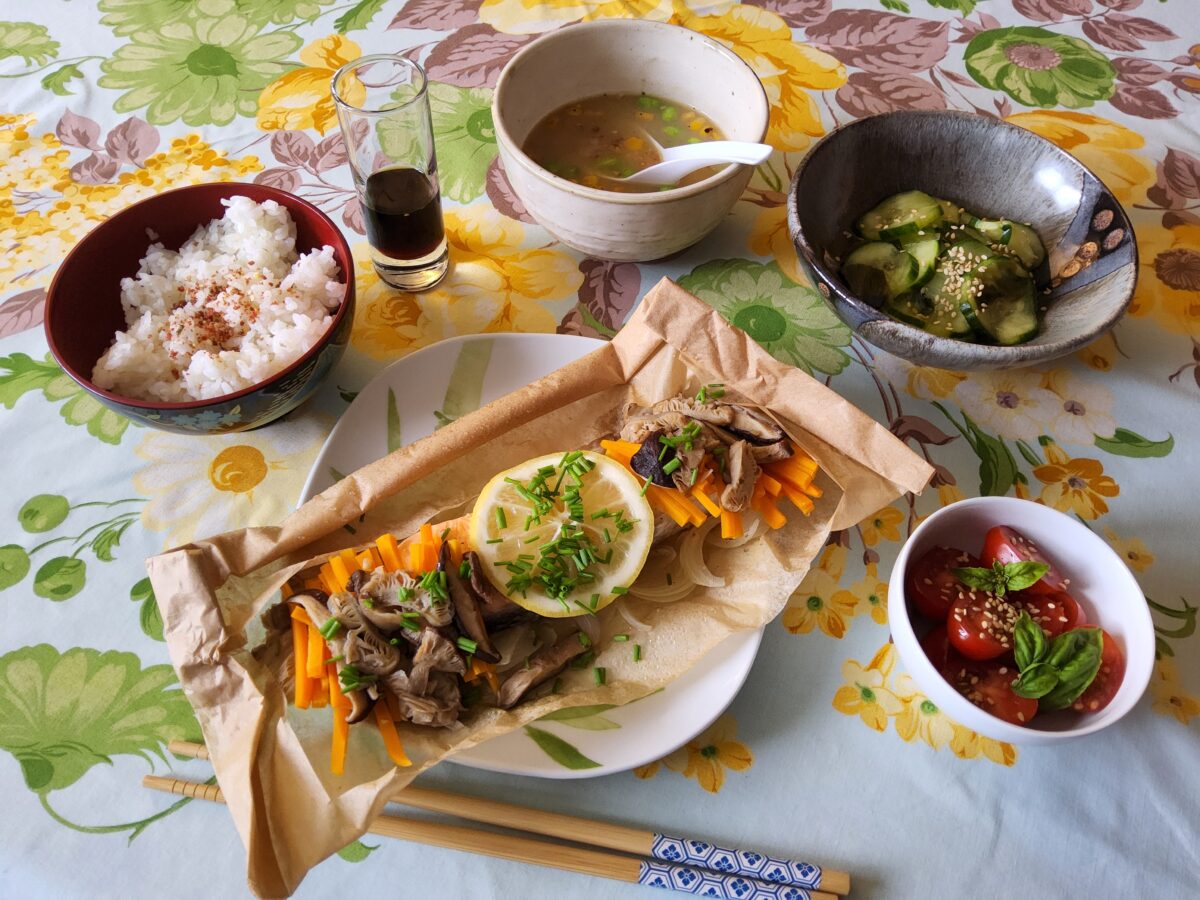
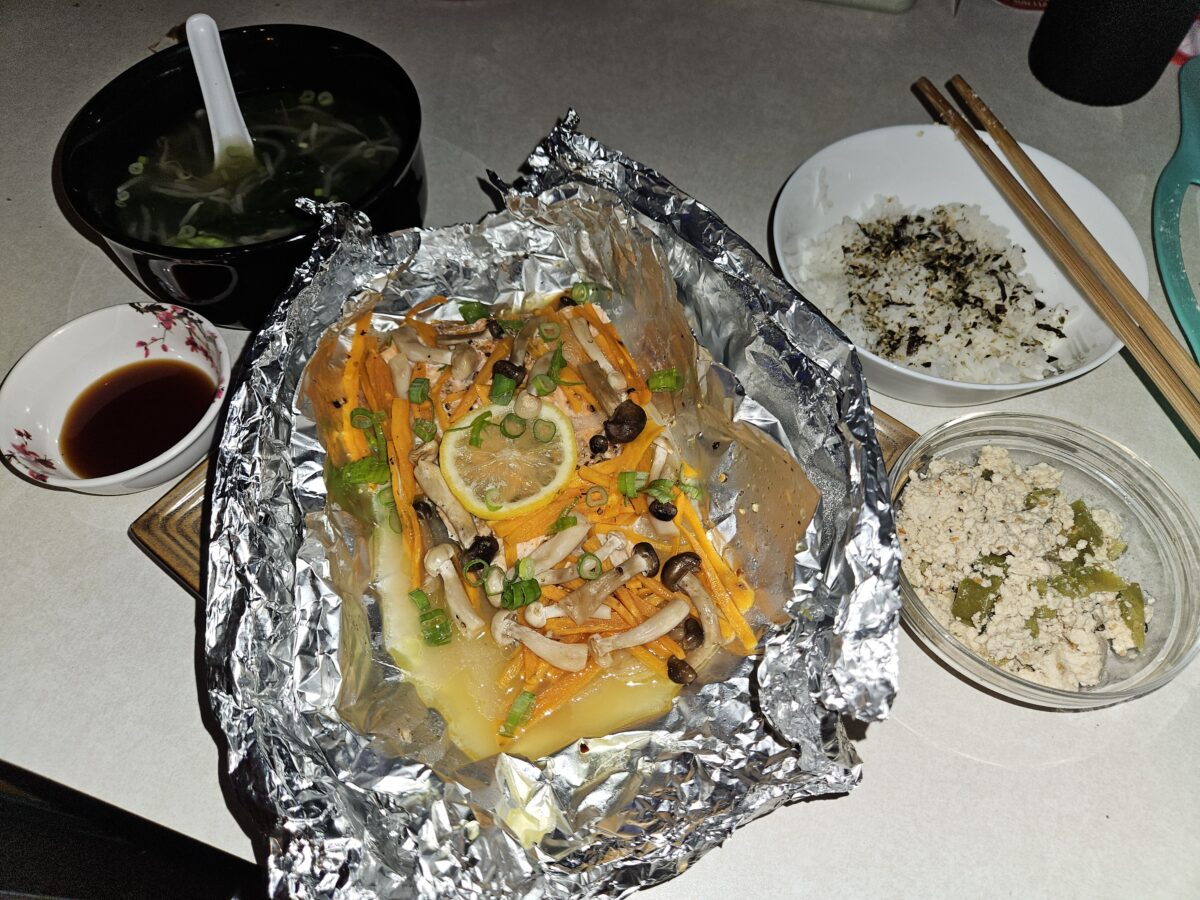
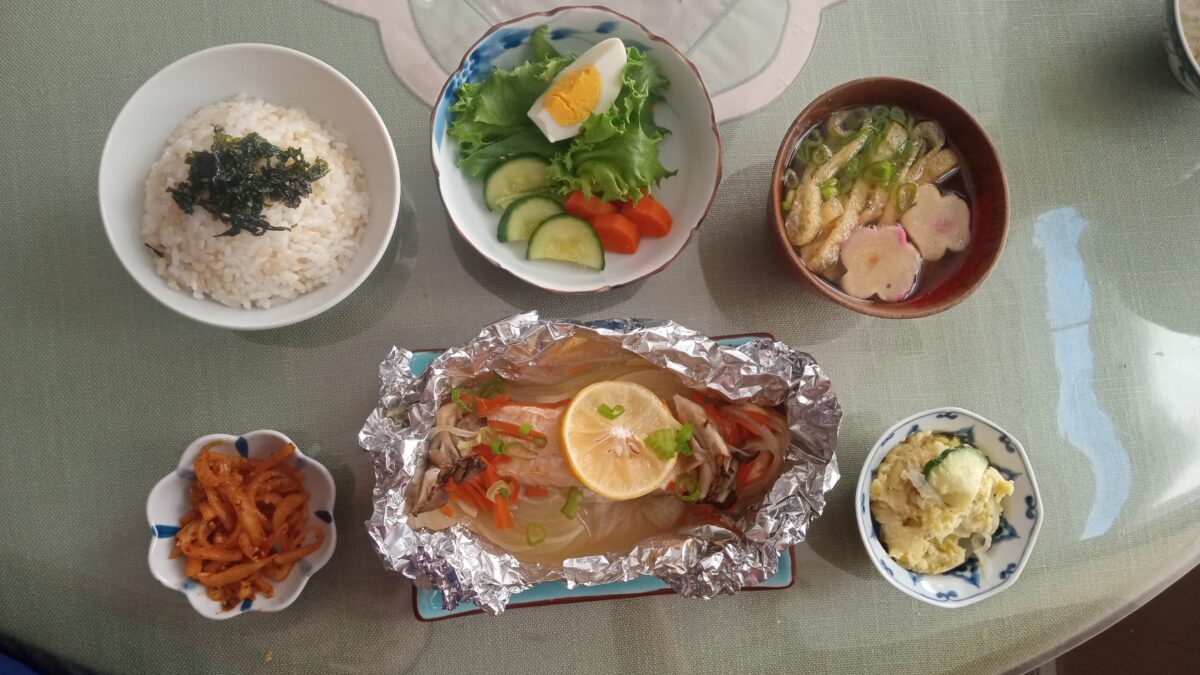
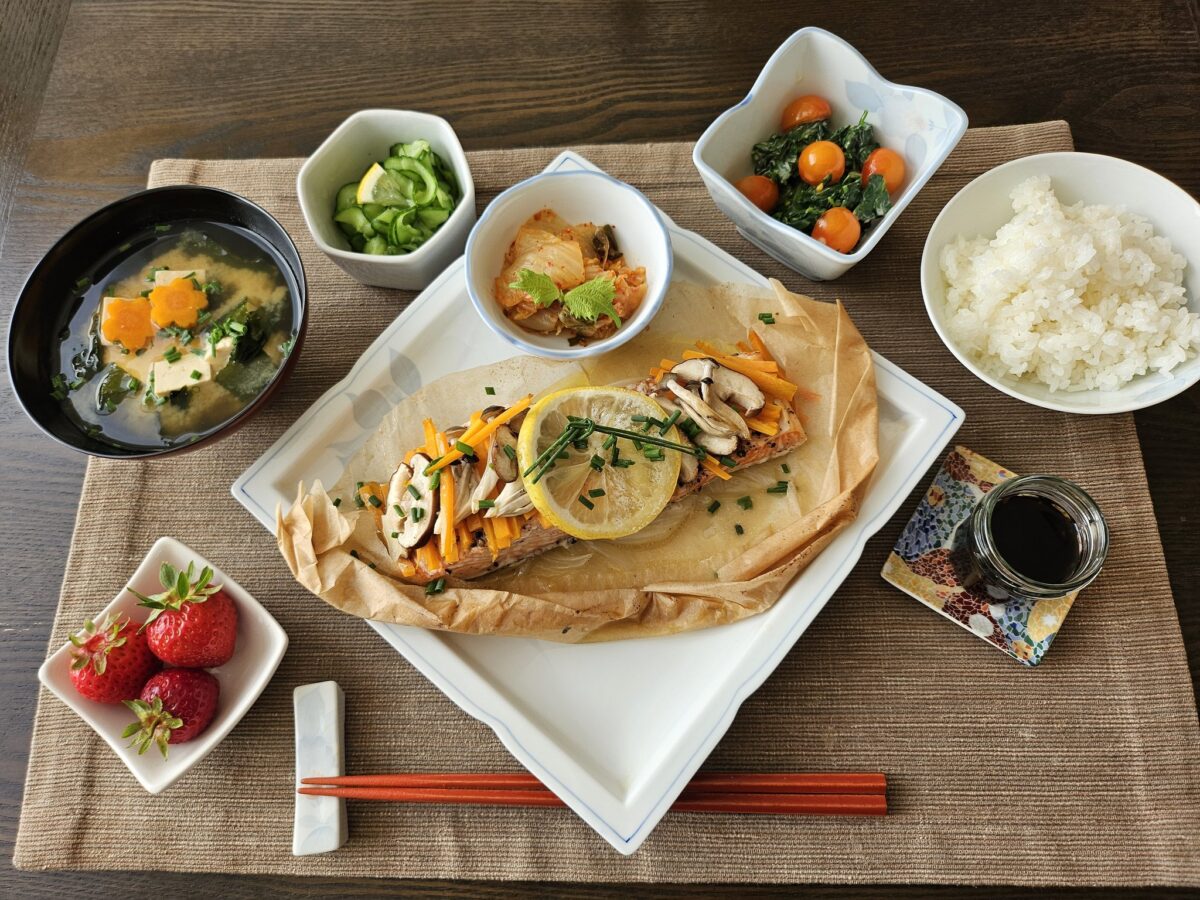
I’d love to hear how your Ichiju Sansai meal turns out! 💛 Send us your photo along with your name (or nickname) so we can give you credit.
Editor’s Note: This post was originally published on February 25, 2018, and was republished on October 14, 2025, with more helpful and in-depth content as part of our newsletter series.



